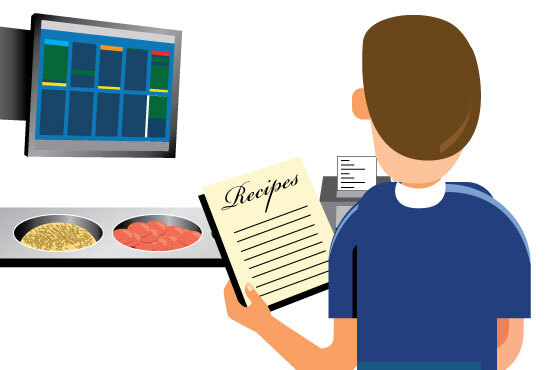How many times have you heard, “The salad was so good this week!” from customers? It’s a great thing, right? Wrong! It might seem like a good thing that your customers are enjoying their dishes more this outing compared to last week. But, it’s actually a clear sign that you don’t have standardized recipes.
What this means is that you are providing your customers with an inconsistent experience. So while this outing might be a success, they could order the same meal tomorrow and be disappointed in the quality.
In a world where 65% of consumers will cut ties with a company from just one bad experience, a single subpar meal is all it takes to lose a paying customer. That’s where standardized recipes are your saving grace.
What to Include in a Standardized Recipe
- Item Name: It should match what is found on the menu to avoid confusion.
- Total Yield: Should include the volume or weight of the completed recipe as well as the number of portions that it produces.
- Portion Size: Listed as a certain quantity or weight to ensure even distribution.
- List of Ingredients: Include not only the name of ingredients, but also the amount that is required.
- Mise en Place: Covers the various small equipment needed (i.e. tablespoon, can opener, spatula, etc.).
- Procedural Instructions: Step-by-step directions on what the cook needs to do and the order that they need to do it in.
- Cooking Methods: Include both the type of cooking that needs to be done as well as the temperature and amount of time the dish should be cooked for.
- Plating Instructions: Detailed breakdown of how to plate the dish and what garnish (if any) needs to be added during the plating process.
- Special Notes: Any added information that covers location-specific details or other clarifying information.
- Photos: A visual representation of what the item should look like if everything has been done correctly.
Benefits of Standardized Recipes
Just like snowflakes, no two cooks are exactly the same. This can result in two pizzas that might be almost identical on paper, but actually come out tasting quite different. Standardized recipes are able to account for this and help deliver better consistency to your customers. There are several key benefits to standardizing recipes:
Consistent Food Quality
The biggest benefit is the fact that customers will be able to get an equally high-quality meal whenever they place an order. Getting someone to choose you amongst the sea of competitors is already hard enough. So the last thing you want is for that customer to get scared away because Steve doesn’t put quite as much sauce on the pizza dough as your other cooks. Once you have standardized recipes in place, Steve and any other cook can look at the recipe to know exactly how much sauce they should be using.
Predictable Ingredient Usage
It's quite alarming to do morning prep and discover that you have almost no fresh mozzarella left, despite having plenty yesterday. It might not be a result of high sales numbers, but rather the fact that Pete is a bit heavy-handed with the fresh mozza.

SpeedLine’s Store Manager Prep Variance report allows you to fine-tune your prep plan and easily determine when there are portion control issues.
Having to “86” something means lost sales and can completely ruin a customer’s experience. So you’re much better off using standardized recipes to let cooks know precisely how much of every ingredient should be used with each order. This allows you to more accurately track your ingredients and improve purchasing forecasts.
Simplified Training
When training new employees, there’s often a lot to remember. So if you have it all written down in standardized recipes, these new employees can easily look it up and follow along. You’ll know if a standardized recipe is good or not by how easily someone who has never made the dish before can follow it.
Once you have standardized recipes in place, the majority of the training for new cooks will be to go over the locations of the various equipment. This will help significantly lower the $6,000 onboarding cost for new hourly employees.
Food Waste Reduction
Without proper consistency, orders are much more likely to get messed up. This will produce unusable dishes that often get thrown out. As a result, you’re contributing to the already troublesome 22 billion to 33 billion pounds of food waste produced by U.S. restaurants each year.
Help both the environment and your bottom line by introducing standardized recipes that reduce your total food waste.
By having standardized recipes in place, you can improve all of these key areas of your business operations.
Posted on Wed, Oct 07, 2020 @ 08:10 AM.
Updated on June 17, 2021 @ 5:50 PM PST.

